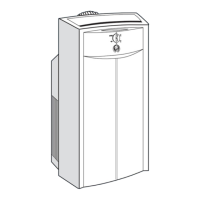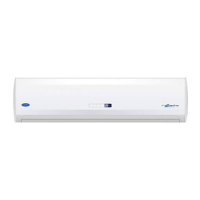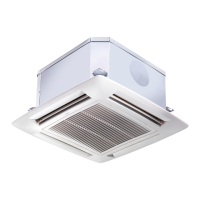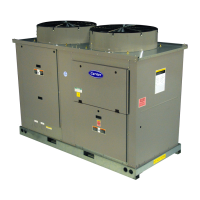T -295
3-1
SECTION 3
TROUBLESHOOTING
CAUTION
Donotunderanycircumstances attempttoservice themicroprocessor. shouldaproblem develop with
the microprocessor, replace it.
3.1 SELF DIAGNOSTICS
A self test is performed by the Micromax Logic Board
each timethe board is poweredup.Errors, ifany, willbe
indicated and t he unit will not be allowed to start. The
error codescanbe read bycounting thenumber of times
that the Logic Board STATUS and CODE LED’s (see
Figure 1-10) flash simultaneously. The Micromate
display will indicate errors with the code ER-#, where
“ER” is the error prefix and # is the error number.
Table 3 -1 Error Codes
CODE
NAME DESCRIPTION
ER 1 Data Memory Logic board data memory failure.
ER 2 Program Memory Logic board program memory failure.
ER 3 A/D A/D and multiplexer failure.
ER 4 Communication F ailure Failure in communication between the logic board and MDST.
ER 5 Program Memory Display program memory failure.
3.2 SYSTEM ALARMS
3.2.1 Alarm Codes
The Micromax Logic Board continuously monitors
system parameters and will generate an ALARM if a
parameter exceeds preset limits. Alarms are indicated
and the controller will respond in accordance with the
information provided in Table 3-2. Thealarm codescan
be read by counting t he number of times that the Logic
Board CODE LED (see Figure 1-10) flashes. Each
alarm code is a two digit number, the first set of flashes
is the first digit and (after a slight pause) the second set
of flashes is the second digit. The Micromate display
will indicate alarms with the code A-## or i--##, where
“A” is an active alarm prefix, “i” is an inactive alarm
prefix and ## is the error number. If multiple alarms are
present the user can scroll through each alarm by
pressing the ARROW keys. When the end of the alarm
list is reached the display will show “------”. If the auto
key is held down for five seconds while “------” is
displayed all inactive alarms are cleared. A listing of
alarm codes is provided in Table 3-2.
3.2.2 Activation
When alarms are detected, they are placed in an alarm
queue in the order at which they initiated unless the
alarm is already present. Each alarm recorded will also
captureanevaporatorhourmeterreadingcorresponding
to theactivation time. Ifthe AUTO keyis pressed while
analarmisdisplayed, theactivationtimecapturewillbe
shown.
3.2.3 Alarm Queue
The alarm queue consist of 10 alarm locations. When
the alarm queue is full the Logic Board will take the
requiredactionbutthealarmwill notberecorded.When
this situation occurs, an “Alarm Queue Full”alarm will
be generated. When the alarms are viewed this will be
the first alarm to be shown.
3.2.4 Alarm Clear
Theuser may clear inactivealarmsusing theMicromate
keypad. Refer to paragraph 3.2.1.
3.3 TROUBLESHOOTING
General procedures for system troubleshooting are
provided i n Table 3-3

